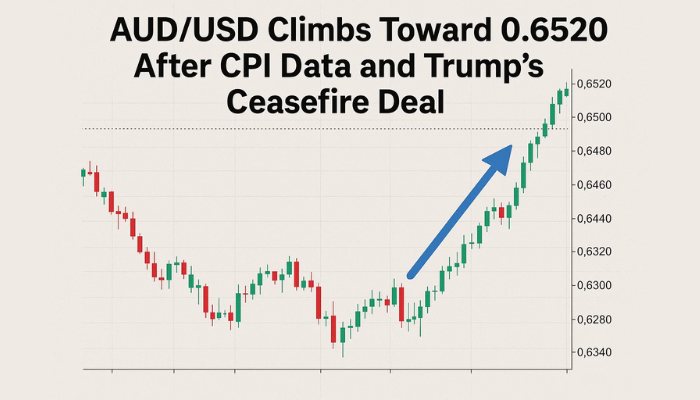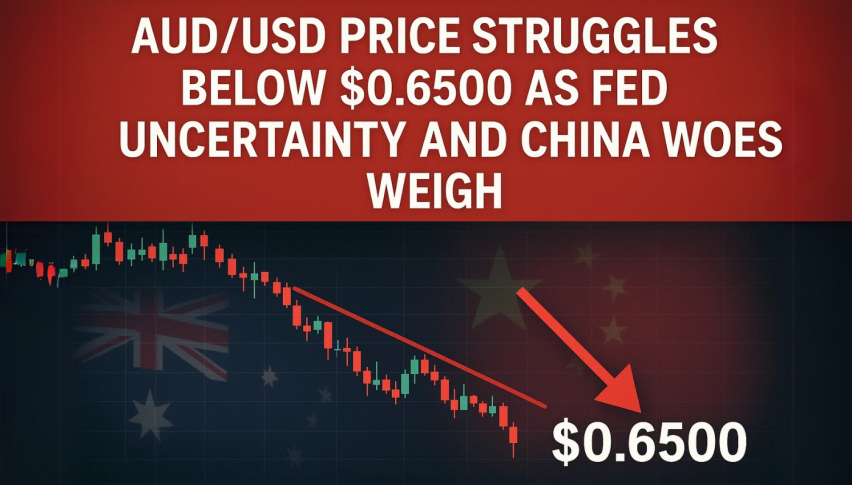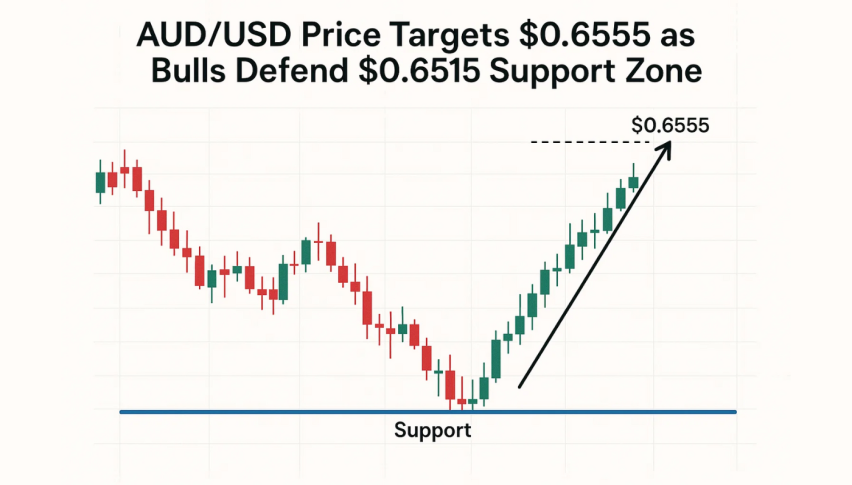Prices Forecast: Technical Analysis
For the daily forecast, the AUD/USD is expected to close around 0.6580, with a range between 0.6540 and 0.6620. The weekly forecast suggests a closing price near 0.6600, with a range from 0.6520 to 0.6680. The RSI is currently at 61.7511, indicating a bullish momentum, while the ATR at 0.0055 suggests moderate volatility. The MACD line is above the signal line, reinforcing the bullish sentiment. However, the ADX at 14.2237 shows a weak trend, suggesting that the current upward movement might not be strongly supported. The Bollinger Bands indicate that the price is near the upper band, which could signal a potential pullback. Overall, the technical indicators suggest a cautiously optimistic outlook for the AUD/USD in the short term.
Fundamental Overview and Analysis
Recently, the AUD/USD has shown a steady upward trend, supported by positive economic data from Australia. The market is reacting to improved retail sales figures and a stable unemployment rate, which are boosting investor confidence. However, global economic uncertainties, such as potential changes in interest rates and geopolitical tensions, pose risks to this upward trajectory. The asset is currently viewed as slightly undervalued, given the positive economic indicators. Investors are optimistic about the AUD’s potential for growth, especially if the global economic environment stabilizes. Nonetheless, challenges such as fluctuating commodity prices and regulatory changes could impact its performance. Overall, the AUD/USD is positioned for growth, but investors should remain cautious of external factors that could influence its value.
Outlook for AUD/USD
The future outlook for AUD/USD appears moderately bullish, with potential for further gains if current economic conditions persist. Historical price movements show a gradual upward trend, supported by positive economic data. In the short term, the asset is likely to be influenced by economic conditions in Australia and global market trends. Over the next 1 to 6 months, the AUD/USD could see moderate gains, with potential resistance around 0.6680. Long-term forecasts (1 to 5 years) suggest continued growth, contingent on stable economic conditions and favorable trade relations. However, external factors such as geopolitical tensions or market crashes could significantly impact its price. Investors should monitor economic indicators and market sentiment closely to make informed decisions.
Technical Analysis
Current Price Overview: The current price of AUD/USD is 0.6578, slightly above the previous close of 0.6578. Over the last 24 hours, the price has shown a slight upward trend with moderate volatility, as indicated by the ATR. Support and Resistance Levels: Key support levels are at 0.6540, 0.6520, and 0.6500, while resistance levels are at 0.6620, 0.6640, and 0.6680. The pivot point is at 0.66, and the asset is trading slightly below it, suggesting a cautious bullish sentiment. Technical Indicators Analysis: The RSI at 61.7511 suggests a bullish trend, while the ATR indicates moderate volatility. The ADX at 14.2237 shows a weak trend strength. The 50-day SMA is below the 200-day EMA, indicating no crossover or confluence. Market Sentiment & Outlook: Sentiment is cautiously bullish, with price action near the pivot, a bullish RSI, and moderate ATR-based volatility. However, the weak ADX suggests limited trend strength.
Forecasting Returns: $1,000 Across Market Conditions
The table below outlines potential returns on a $1,000 investment in AUD/USD under different market scenarios. In a Bullish Breakout scenario, a 5% price increase could raise the investment to approximately $1,050. In a Sideways Range scenario, the price might remain stable, keeping the investment around $1,000. In a Bearish Dip scenario, a 3% price decrease could reduce the investment to about $970. These scenarios highlight the importance of market conditions in determining investment outcomes. Investors should consider their risk tolerance and market outlook when deciding to invest in AUD/USD. Monitoring economic indicators and technical signals can help in making informed decisions. Diversifying investments and setting stop-loss orders can mitigate potential losses. Overall, while the AUD/USD shows potential for growth, investors should remain vigilant of market dynamics and external factors that could impact returns.
| Scenario | Price Change | Value After 1 Month |
|---|---|---|
| Bullish Breakout | +5% to ~$0.6900 | ~$1,050 |
| Sideways Range | 0% to ~$0.6600 | ~$1,000 |
| Bearish Dip | -3% to ~$0.6400 | ~$970 |
FAQs
What are the predicted price forecasts for the asset?
The daily forecast for AUD/USD suggests a closing price around 0.6580, with a range between 0.6540 and 0.6620. The weekly forecast anticipates a closing price near 0.6600, with a range from 0.6520 to 0.6680. These predictions are based on current technical indicators and market conditions.
What are the key support and resistance levels for the asset?
Key support levels for AUD/USD are identified at 0.6540, 0.6520, and 0.6500. Resistance levels are at 0.6620, 0.6640, and 0.6680. The pivot point is at 0.66, and the asset is currently trading slightly below it, indicating a cautious bullish sentiment.
Disclaimer
In conclusion, while the analysis provides a structured outlook on the asset’s potential price movements, it is essential to remember that financial markets are inherently unpredictable. Conducting thorough research and staying informed about market trends and economic indicators is crucial for making informed investment decisions.



